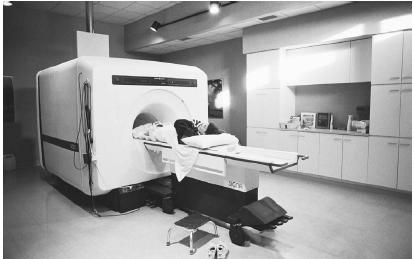Noninfectious Diseases - How it works
The Threat of Noninfectious Diseases
The world has long suffered under the threat of infectious diseases, some of which include smallpox, chicken pox, cholera, malaria, diphtheria, scarlet fever, influenza, polio, pneumonia, and even the common cold. Except for the last one, which is rarely fatal, such conditions have racked up a considerable death toll. For centuries people attributed these diseases to all manner of false causes, ranging from divine curses to an imbalance of bodily fluids. Only with the development of the microscope in the 1600s did scientists begin to identify the real cause behind most infectious diseases: bacteria, viruses, and other parasites. Infectious diseases, discussed elsewhere in this book (see Infection, Infectious Diseases, and Parasites and Parasitology), continue to pose a threat to life in underdeveloped nations. In North America, Europe, the emerging capitalist democracies of eastern Asia, and a handful of other materially and technologically advanced lands, however, infectious diseases have taken a back seat to noninfectious ones as well as to other threats.
CAUSES OF DEATH IN AMERICA.
In the United States today, the four leading causes of death (see list in Disease) are noninfectious conditions: heart disease, cancer, stroke, and chronic obstructive lung diseases. The first of these conditions is discussed in Disease, and the second is examined later in this essay. Stroke, which occurs when a clot obstructs the flow of blood to the brain, may be classified along with heart disease as a stress-related ailment of the circulatory system. Chronic obstructive lung diseases include emphysema, cystic fibrosis, and other conditions with widely differing causes that nonetheless all affect the same organ in the same way.
The remainder of the list includes two non-disease-related conditions (accidents at no. 5 and suicide at no. 8), three more noninfectious diseases (diabetes mellitus at no. 7, kidney disease at no. 9, and chronic liver disease and cirrhosis at no. 10); and just one infectious-disease-related set of causes. The latter, no. 6, consists of two diseases, pneumonia and influenza, which may be the result of another type of infection, the only infectious condition that poses a serious threat in the Western world today: AIDS, or acquired immunodeficiency syndrome.

Varieties of Disease
The essay Disease classifies noninfectious diseases as follows: hereditary or genetic diseases (e.g., hemophilia, discussed later in this essay); glandular diseases, or conditions involving a group of cells that filters material from the blood (e.g., diabetes mellitus, also included in the present essay); dietary diseases (see the essays Vitamins and Nutrients and Nutrition); cancers (discussed here); stress-related diseases (see Disease); autoimmune diseases (see Immunity and Immunology); and diseases of unknown origin (see Immunity and Immunology).
This is one way of dividing up ailments, and it happens to be the method applied in the essays of this book that deal with diseases. This method has the advantage of illustrating the wide variation in noninfectious diseases, but it would not necessarily be the best model to use for an in-depth professional study of disease. Scientists who study illnesses typically use one of several methods of classification that, while less broadly based than the one used here—and perhaps less interesting as well—are more efficient, because they group all diseases according to the same characteristics.
SOME OTHER CLASSIFICATION SYSTEMS.
Among the systems doctors and scientists use for grouping diseases are topographic; anatomic; physiological; pathologic; etiologic, or causal; and epidemiological classifications. Topographic classification refers to bodily region or system: for instance, the circulatory system, the neurological system, and so on. The second method, anatomic (by organ or tissue), also uses parts of the body as a criterion for classification. The designation of heart and lung diseases, used earlier in discussing leading causes of mortality in the United States, is an example of this system.
Physiological classifications divide diseases in terms of function or effect (for example, metabolic disorders, some of which are discussed in Metabolism), while pathologic classifications separate diseases by the nature of the process that the disease takes: for example, inflammatory diseases. Etiologic, or causal, classifications are used most commonly in discussing infectious diseases, where broad types of causes can include viruses, bacteria, or other types of parasites. Likewise, epidemiological classifications usually refer to infectious diseases. Epidemiology is an area of the medical sciences devoted to the study of disease, including its incidence, distribution, and control within a population.
Comment about this article, ask questions, or add new information about this topic: